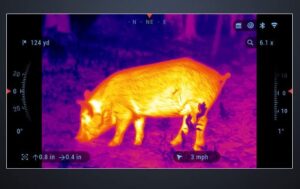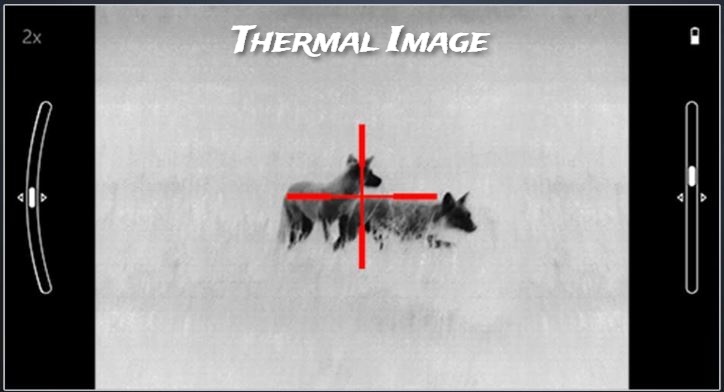Can you use a thermal scope during the day?
Thermal scopes have become a popular choice for many people, especially the ones who love to hunt. Although thermal scopes have proven to be adept at locating targets in the dark, most hunters still ask the question, can you use a thermal scope during the day?
The answer is Yes. This article aims to delve deeper into the reason why the thermal scope may be used during the day but the night vision scope cannot.
How Thermal Scopes Work
Thermal scopes work by detecting the thermal energy emitted by the target object. It should be noted that even a block of ice will release thermal energy, but at a lesser level than a living animal would.
The thermal energy is captured by a thermal sensor/microbolometer present in the thermal scope. The microbolometer then converts this into an electronic signal displaying various levels of thermal energy using different colors in what is known as a thermogram.
Different objects emit different levels of thermal energy. A microbolometer can detect thermal energy differences of as little as 0.01 °C. This means that if an object’s temperature differs by 0.01 °C from its surroundings, it will be depicted using various color tones. You will also be able to distinguish an outline between them.
See also: Best thermal scopes for 300 yards
Uses of a Thermal scope
Tracking blood trails
If you are hunting and you take your shot at a target that makes it out alive you still have a chance that the wounded animal will succumb and eventually you will have your meat.
The thermal scope does a really good job identifying these blood spots out in the trail because the blood stains are shown with a distinct appearance through the thermal scope.
Scouting targets
The thermal scope does a good job of tracking targets because it can detect targets hidden behind obstructions and dense bushings. Furthermore, the thermal sight performs flawlessly in difficult environments such as fog, pitch-darkness, smoke, and dust while still providing you with a view of your target.

Advantages of a Thermal scope
- Can be used during the day and night-Since a thermal scope doesn’t rely on ambient light, it can be utilized at any time of day. The only time when it may not deliver is when the temperature of the target objects and the surrounding is similar. This can typically happen on a very hot day.
- Works when it’s very dark-Even in extremely dim environments, the thermal scope operates with excellent performance. In contrast, a night vision scope needs IR illumination.
- Easily defines multiple targets-One of the strengths of the thermal scope is that different targets will be clearly defined by their separate outlines. This makes it easy to track multiple targets.
Disadvantages of a Thermal scope
- It’s difficult to identify the target-The thermal scope doesn’t display an image rather it displays a thermogram. An elk can bear the same characteristic as a coyote, on a thermogram.
- Thermal scopes are more costly-The price of thermal scopes is more than that of night vision scopes. However, there are now a lot of more affordable solutions available.
Thermal Scopes FAQs
Can you use a thermal scope during the day?
Yes, you can use thermal scopes during the day. This is because it will not be damaged by excessive light, unlike the night vision scopes. Thermal scopes aren’t sensitive to light but rather heat from target objects.
What is the best thermal scope?
The best thermal scope is the ATN ThOR LT 4-8x50mm Thermal Rifle Scope. This scope comes with one of the best sensors, that gives you high-quality images. In addition to a remarkable range of 1,950m.
How well do thermal scopes work during the day?
Thermal scopes operate properly during the day; the only issue is that the contrast between the images is not as strong as it would be at night, when the overall temperature is lower.
